How to make your own EM-1™ inoculant and Bokashi
Aloha thumbs and friends. I am back to give one of my biggest secrets away, it is my own homemade root inoculate or EM™/BAM(beneficial active microorganism) made with rice water, milk and sugar. There are many shelf bought version for ridiculous pricing, for those with the little know how to make ones own. House & Garden makes Root Accelerator,Hygrozyme, Sensizyme, Advanced Nutrients Voodoo Juice are some of the high priced products that my own home culture works as well as or even in some cases has even worked better. I know many growers that would not even think of culturing their own or even would have the know how to, but I offer you my knowledge for your own frugal organic gardening purposes. Not to mention how I have talked about recycling and composting with worms, now I will introduce you to the Japanese form of Bokashi Composting or fermenting and how to make your own home made cheap alternative Bokashi Buckets and Bokashi mix.
Wikipedia:
Effective Microorganisms, aka EM Technology, is a trademarked term now commonly used to describe a proprietary blend of 3 or more types of predominantly anaerobic organisms that was originally marketed as EM-1™ Microbial Inoculate but is now marketed by a plethora of companies under various names, each with their own proprietary blend. “EM™ Technology” uses a laboratory cultured mixture of microorganisms consisting mainly of lactic acid bacteria, purple bacteria, and yeast which co-exist for the benefit of whichever environment they are introduced, as has been claimed by the various em-like culture purveyors. It is reported[1] to include:
- Lactic acid bacteria: Lactobacillus plantarum; L. casei; Streptococcus Lactis.
- Photosynthetic bacteria: Rhodopseudomonas palustris; Rhodobacter sphaeroides.
- Yeast: Saccharomyces cerevisiae; Candida utilis (no longer used) (usually known as Torula, Pichia Jadinii).
- Actinomycetes (no longer used in the formulas): Streptomyces albus; S. griseus.
- Fermenting fungi (no longer used in the formulas): Aspergillus oryzae; Mucor hiemalis.
The concept of ‘Friendly Microorganisms’ was developed by Japanese horticulturist Teruo Higa, from the University of the Ryukyus in Okinawa Prefecture|Okinawa, Japan. He reported in the 1970s that a combination of approximately 80 different microorganisms is capable of positively influencing decomposing organic matter such that it reverts into a ‘life promoting’ process. Higa invokes a ‘dominance principle’ to explain the effects of his ‘Effective Microorganisms’. He claims that three groups of microorganisms exist: ‘positive microorganisms’ (regeneration), ‘negative microorganisms’ (decomposition, degeneration), ‘opportunist microorganisms’. In every medium (soil, water, air, the human intestine), the ratio of ‘positive’ and ‘negative’ microorganisms is critical, since the opportunist microorganisms follow the trend to regeneration or degeneration. Therefore, Higa believes that it is possible to positively influence the given media by supplementing with positive microorganisms.
EM™ Technology is supposed to maintain sustainable practices such as farming and sustainable living, and also claims to support human health and hygiene, animal husbandry, compost and waste management, disaster clean-up (The Southeast Tsunami of 2004, the Kobe Earthquake, and Hurricane Katrina remediation projects), and generally used to promote functions in natural communities.
EM™ has been employed in many agricultural applications, but is also used in the production of several health products in South Africa and the USA.[citation needed] (fuel additive products are no longer available).
A High School in Malaysia, Sekolah Menegah Kebangsaan Dato’ Onn Butterworth, Penang, are using EM to treat Greywater, minimise odour from Septic Tank & remove sludge from drains.
This is a recipe I learned from a friend along time ago.
EM/BAM: this a trade secret!(lactobacillus culture)
1/4 cup rice
1quart Mason Jar
1 cup water
1 fine mesh strainer
80 oz milk depends on how much one is making
1 gallon container or jar
1 tsp. black-strap molasses
Procedure:
1. Place rice and cup of water in mason jar and shake vigorously until water is cloudy white, strain off rice kernels and discard into tour compost bin or cook for dinner. I have heard of the Japanese adding a dash of nato to help ferment but not needed.
2. place cap on loosely and store in a cabinet or cool dark place for 5-7 days.
3. Sift off top layer and strain liquid (serum)
4. measure your rice liquid and now add a ratio of 1 part fermented rice to 10 parts milk, I would culture in a 1 gallon jar. let sit for 5-7 days.
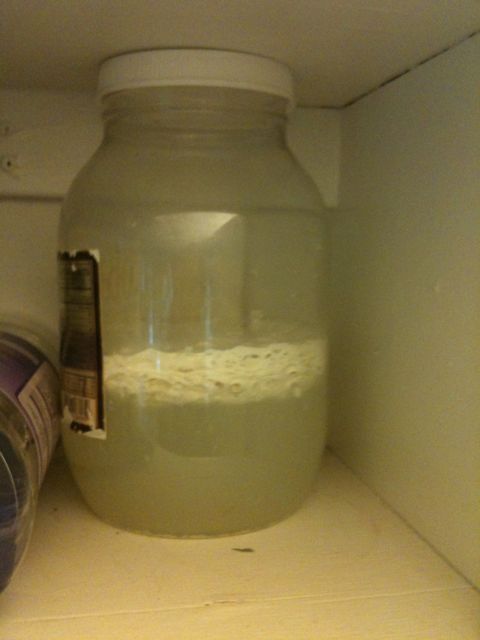
Rice water and milk serum fermenting 3 days - notice lid is only siting on top as to not build pressure.
5. sift off curd settlement and add to your soil or feed your animals it is good for their digestion, then there should be a light yellow serum left this is your unactivated serum.
6. Add 1 tsp molasses to feed and keep your bacteria alive and refrigerate. should have a shelf life of 6-12 months.
7. to activate microorganism activities and to room temperature non-chlorinated water at a ratio of 1 part Serum to 20 parts water.
8. feed to plants either straight into soil or follicular feeding.
Bokashi compost
Bokashi is a method of intensive composting. It can use an aerobic or anaerobic inoculation to produce the compost. Once a starter culture is made, it can be used to extend the culture indefinitely, like yogurt culture. Since the popular introduction of effective microorganisms (EM), Bokashi is commonly ma
de with only molasses, water, EM, and wheat bran.
In home composting applications, kitchen waste is placed into a container which can be sealed with an air tight lid. These scraps are then inoculated with a Bokashi EM mix. This usually takes the form of a carrier, such
as rice hulls, wheat bran or saw dust, that has been inoculated with composting micro-organisms. The EM are natural lactic acid bacteria, yeast, and phototrophic bacteria that act as a microbe community within the kitchen scraps, fermenting and accelerating breakdown of the organic matter. The user would place alternating layers of food scraps and Bokashi mix until the container is full.
Bokashi is moderately easy and cheap to make and there are many online video walkthroughs, you tube being a great place for a beginner to get some help, but here is a easy simple way to make Bokashi. Mostly made from wheat husks or wheat bran but I have heard of people using any thing from oats, barley, wood chips and even unsalted peanut husks.
Bokashi Grain ![]() 10 & 50 lb mix)
10 & 50 lb mix)
10 lbs wheat bran
4 tbsp EM serum
4 tbsp Molasses
10-12 cups non -chlorinated water
______________________
50 lb wheat bran
3/4 cup EM serum
3/4 cup Molasses
3-4 gallons Non-chlorinated water
air tight containers such as buckets with lids or storage totes will work too.
Something to mix in or on.
Procedure:
1. Add molasses to water and mix well.
2. Add Em serum
3. put wheat bran in mixing container or on something to mix on if one is making large amounts.
4. add liquid slowly and mix vigourously till all liquid is added
and all bran material is dampened. Bokashi mix should be equally damp and slightly sticks to itself.
5. For my ferment I do 5 gallon buckets and trash bags. Once my mix is ready I line a 5 gallon bucket with 2 trash bags and start scooping my Bokashi mix in side in layer, compacting and squeezing all the air out of my bran mix.(Keynote: Air will create the wrong bacterial culture and if you see black , green or gray mold throw your mix away, white is OK that is yeast.) Tie off bags and place air tight lid on bucket.
6. Store for 14 days in cool dark area for fermenting.
7. open fermented mix(smell should be like apple cider sweet)and Sundry on concrete or on a tarp in the sun, time may vary depending on your location and time of year for drying.
8. Place in container for your Bokashi composting needs, flush down toilet to clear septic tanks, feed to live stock to better digestion.
Well this is a couple cheap easy trade secrets that should benefit your organic medical gardens Thumbs. Be green and frugal it is best we do thing for ourselves. If you feel the need to do more research look into organic farming with probiotics for plants.
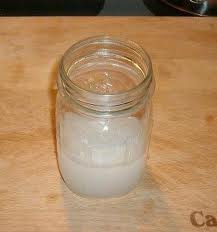
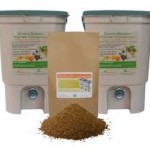
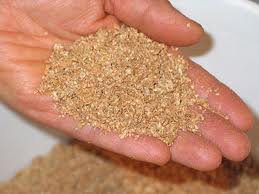
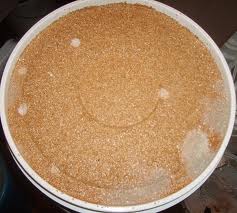





Thanks for your reply. One more question…I saw that some people use sawdust instead of bran. I tried it and just guessed at the quantity. I had to add more liquid because the sawdust soaks it up more. Do you happen to know any recipes with the sawdust, or problems in the process that might arise as I use it?
Well if used in a hydro res will create micro organism growth, which could clog pumps and sprayers and create sludge growth in your air stones , but I have used it. Cause more maintenance but yes can be used.
I have not used honey, as I am needing the trace minerals in molasses that honey does not provide.
They are the same the AEM is just activated syrum, Em-1 is effective microorgsnisms and they are the same, but one is a trademarked name by a company.
Also,
What are your thoughts on using buckwheat bran? I have read it has the highest amount of pnsb in its root system.
I have heard other using different husk types can work, so experimenting is pay of DYI, I encourage it!
Thank you so much for your instructions! It’s truly been very helpful! I’d like to ask however - once activated - for how long can the solution be used?
Once activated yes your lacto activate has a shelf life of a couple weeks to days( depends on your natural climate ), but if you add a few drops of molasses to feed organisms they reproduce, but you don’t have to activate your lacto juice, it can be store in the refride for later activation in small batches.
Thanks for the great post. I want to use EM for my hot tub and wanted to know if the serum you are making would be similar to the Teraganix $60 a gallon EM-1 inoculant. Also what type of milk are you using? Does it need to be raw or is pasteurized, homogenized okay? Do you think this would be okay to use internally for the probiotics? Thanks again.
Yes similar, as my post is a few years old, and Em-1 company has advanced some of there products, it’s not exact anymore.
I use whole milk!
Can we use Yakult a lactobacillus drink/supplement?
thanks….for em rescipe..i am just beginning to grow cucumbers on my i acre land, i hope using em and bokashi will help my cumcumber healthier and fetch good money,,,thanks a lot dear…..
Hello. Thank you for your secrets and instructions I was wondering if the Rice-water EM is the EM needed to make the bokashi? Or do you process the EM further to add the yeast and other bacteria?
I was wondering if the Rice-water EM is the EM needed to make the bokashi? Or do you process the EM further to add the yeast and other bacteria?
Sincerely Christina Grønlykke.
I was trying to follow your instruction to produce rice “serum”, after 7 days in refrigirator, my rice water had no upper layer, but bottom instead, right on bottom of jar i had cloud of milky substance, all water was whitish but bottom was mor dense, so i got rid of it, and used whitish water. Besides that my milk and rice water do not look like your photo at all, all white like milk. And can i keep milk/rice water in refrigerator or room temperature required?
Sorry my friend you have miss read a step, you store serum in refrigerator after you have made the probiotic, it states to store on a shelf or some place like that, once you have infected your milk with the rice water store on shelf. Then once a week has passed there you will have a yogurt head and a swum on the bottom, shift the liquid, there is the serum, now you can store your sifted serum in the fridge and activate what you need with a little molasses at room temp.
You make the EM yes and you need to use more water and molasses to make your activate to drench your bran.
Yes have a friend just using EM activate on his and that’s all he waters with and has huge cucumbers coming from his organic garden. He has CP and this makes his gardening and simple.
This is all actually edible, and the probiotic in yogurt is the same lacto, this is a format for making a cheese type yogurt. The “curd” at the top can be eaten, taste like cottage cheese, trust me, I tasted it and then fed it to my worms, cats and dog, also the neighbor behind me fed it to his chickens, funny thing he had them for a month got 4 eggs, after the probiotic curd was eaten, the next day he came out to his 3 chickens had laid 3 eggs each. Then the next day he got a varied number from1-3 eggs through out the 3 chickens, he asked me for more, I had put some in my compost bin for my worms, so I dug some out with few worms in it and gave it to him. He mixed it with seed grain and fed them it, next day 3 eggs each. I told him he can use store naught activia mixed and do the same, and 3 eggs everyday since.
When I make the EM1. Would like to know how many parts of EM1 to use with water to apply to my compost pile would like to apply this next spring it’s to cold here now? Your instruction are very good and detailed, like the pictures.
Tom fron Washington State
Aloha and “Uep” as we say here on Mallorca - thanks for publishing this receipe. Followed your steps and everything worked as discribed, first of all the smells - really strong like vinager with a touch of apple. In one of his books Teruo Higa encourages to trust your nose, now I know what he means. At no step of the process I noted any real disgusting smell. Today I set up my first compost with the inoculant. In the process I tried to work as clean as I used to see it when my mom was doing some homecanning. Glasses and tools were cleaned with boiling water and let dry in fresh air. Mallorca is constantly humid place and has a lot of mould if you are not careful. Luckily I had a handful of EM ceramic pipes from a visit at Emiko in Germany and they were added to the rice water and the later mixtures with milk and bran. As I never could afford the EM-products I apreciate to obviously having found an affordable way to make something valuable from my organic trash - keep growing, aloha
Aloha,
Composting- first I like to mix my yogurt portion of my Lacto bacillus into the compost, this feeds any worm content, crashing an asexual orgy in your worm compost. As for spraying my compost I have poured if on straight and 6oz lacto :5gallons water and 1-2 t tbls/ 1 gallon water to create activate to pour on, then also i bubble chlorine off for 1hour first before mixing in the water
If you make rice ferment near bamboo it will absorb the microbes in the air, bamboo expels them.
No but, sounds interesting to try a control with!
my cucumbers grew well and strong. Grade A fruits produced 85%. But Downy mildew Attacked and I managed to harvest for 20 days only..around 8 tons . Using Em is great …thanks for the tips..any tips to prevent downy mildew attack…
hi rav
first of all u rock!!
my rice water are on their last day…tomorrow i need to add the milk. i have 2 Q
1 the rice water smell really bad…..thats how it should be right?
and second should i use unpasteurised milk or pasteurized ?
thanks so much!!!!!
Aloha,
First yes it does smell! Lol! And second u can use either one, I have made with both and have had good results with both. And last You rock for doing it yourself and learning basic techniques that are meant to be passed on through generations.
rev.summit says sawdust can be used in making bokashi instead of bran “if used in a hydro res will create micro organism growth, which could clog pumps and sprayers and create sludge growth in your air stones, but I have used it. Cause more maintenance but yes can be used.”
In fact, any high carbon source, including shredded leaves, can be used as a medium to make bokashi as long as the EM serum is used. On the other hand, not all mediums are as easy to work with as rice or wheat bran nor do they stabilize for storage as well. Perhaps, sawdust, wood chips, dry leaves, etc. are best used with EM in the landscape or compost bin where the EM can accelerate the decomposition process and provide nutrients to trees, shrubs, perennials or compost.
Could one put yogurt and some yeast for making bread in with one´s vegetables and not go through your process? Have you tried to make a shortcut?
You can buy koji rice for making Japanese food ferments, I have used this instead of rice water ferment.
Hi, rev.summit, you said:
“I have heard of the Japanese adding a ‘dash of nato’ to help ferment but not needed.”
Can you explain what “nato” is?
I tried the recipe for making the lactobacillus culture and it works great! However, using a very wide tub for the 2nd step rather than a jar produces more curds for the compost or worm bin. I had very little noxious odor resulting from either step. Finally, readers should note that any high carbon source can be used to make bokashi. Rice hulls (the best), dried finely shredded hardwood leaves, shredded dry pine needles, aged sawdust (2-3 years), shredded straw, dried molasses (various grain residues splashed with molasses), etc.
I have a lot of spent barley from home brewing, do you think that would work for the Bokashi carrier. I would dry it after brewing and then fallow the recipe. also how much brewers yeast(s.c.)can or should I add?
I live in a northern (COLD) climate. I cannot dry my bokashi bran out in the sun (it would just freeze). Can I dry it out in my basement near a dehumidifier? Or in my oven on a “drying” setting like I would use to dry fruits or herbs?
Not sure my friend if you could use the spent bran, brewers yeast? I don’t use it but there are organic products such as bio root by General Organics that have it in their mix.
Aloha, actually the bran or bakashi doesn’t dry my dear it is saturated with EM and then fermented and covered, I have personally heard of drying its is just a step not taken in my bakashi.
I made the inoculant all the way through now it is sitting in my fridge I opened it the other day and
It smells bad. Do I need to start over or just through the lid back on and call it good?
Thanks
Aloha Dan,
Ok the serum from the ferment process before adding molasses can be refrigerated, take and add molasses to what is needed of serum at room temp at the time to activate with molasses , try not to store large amounts premixed with molasses for too long, but you can make some, shelf life after activation to me is around month if I am opening and closing storage bottle I mixed serum and molasses in. And yes it smells like apple cider and cheese lol
Thanks for the tips on creating bokashi chips.
Hi. Does anyone have any scientific evidence that it is necessary to specifically inoculate compost with anything other than some fertile soil or compost. It seems there are a staggering number of bacterial and fungal species present in soil, air, and rotting plant matter. I have an open mind about Bokashi, or whatever preparation, being effective and convenient, but can’t help feeling it would be no more effective than a well balanced and managed compost heap.
Thank you for the lesson. The EM fluid that is activated, could it be used to turn kitchen garbage to Bokashi, without making the starter (i.e. mixing with bran) first?
Aloha,
Yes there is microorganism in ground soil and in an out door pile of compost the soil can work but it is a slow go. With the addition of the lacto organisms in bakashi will speed the process up, but remember that Bakashi is a different type of composting, more like a pickling compost and is meant to be able to compost in little buckets to kitchen trash cans. Must remember not everyone is blessed with a yard and large accommodations, in small space bakashi is a wonder. Being on a island with huge limitations on most growers and there space much like the Japanese bakashi becomes a easier and more convenient way for a small indoor farmer to create good compost.
I have never just poured it on top if that is what u are asking. But I have heard from others they have and didn’t get they same results, remember bakashi is a type of compost pickling in a sense and a little different from regular composting.
Mahalo for sharing this recipe.I’ve been searching! Thrilled to have found it. My first kitchen appliance as a kid was a yogurt maker. Been fascinated with cultured foods ever since. Just getting back to growing stuff. This will be my first season on the Mainland. Challenging climate…Las Vegas. Trying to arm myself with all the know-how that will make for a successful first attempt with self watering containers and vertical growing an urban desert enviro. I’m currently fermenting rye flour (for raw kvass) and sprouted wheat (for rejuvelac).
Do you think that too many beneficial bacteria can compete and lessen the positive effects?
Aloha
A good microbial balance is needed but the recipe I have here can vary also as if fermented near good IMO breathing plants the ferment can absorb more beneficial and help plants in that very environment. I am also experimenting with adding barley malt and brewers yeast to my ferments and receiving some wonderful results. Recently also inoculating coco chunks and mediums with EM mixture and layering in the bottom of pots to create good drainage and vigorous root growth. A 10% mixture into my soil also seems to give vibrant new growth to newly transplanted seedlings and clones!
Aloha,
How does the bokashi affect my composting worms? Will it kill them if I put too much?
Question: Is the rice raw or cooked when you put it in the water in step 1 to make EM?
As I have used the curd part in my composted and poured the activated lacto on my compost it has had no ill effects, actually after I put the curd in my compost bins the worm activity is more rapid and in days after there is a population boost in worms. I like to place the curd I between card board and I come back and the card board is usually gone and piles of small worms by the 1000′s are usually in the area.
Aloha,
In making infected rice water I am using raw uncooked rice. But there is a way to make a cooked rice gruel and wrap it in newspaper and let it ferment and absorb IMO and create what is called KOJI rice which is used in cooking and food fermenting in Japanese cooking. If you find this product u can use it instead of infected rice water also as through experience it works well and makes the steps and process quicker. Have been experimenting with adding barley malt and brewers yeast to the serum after adding molasses and getting very positive results I will be posting some new recipes and instructional videos soon.